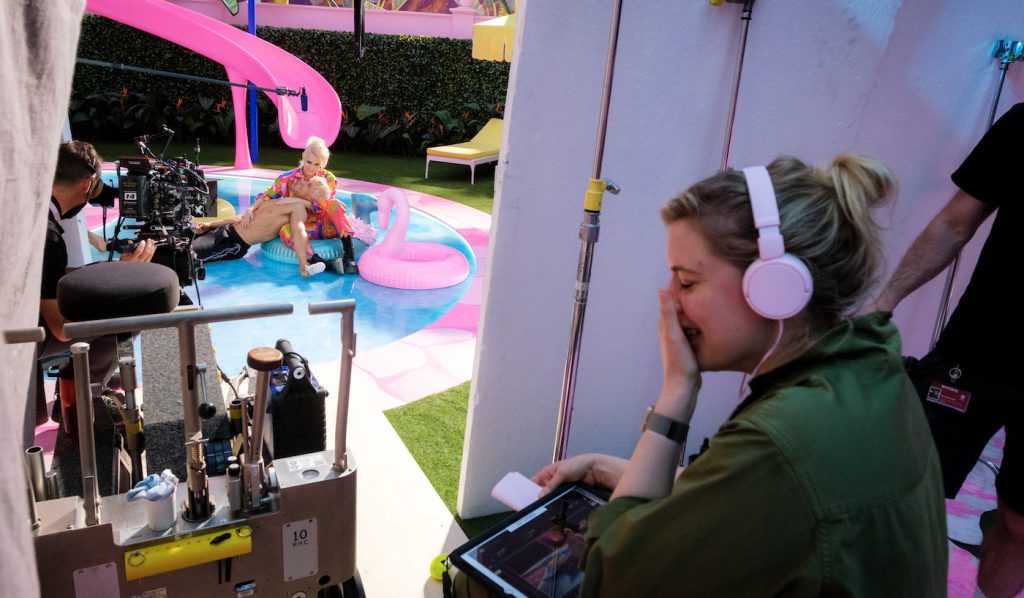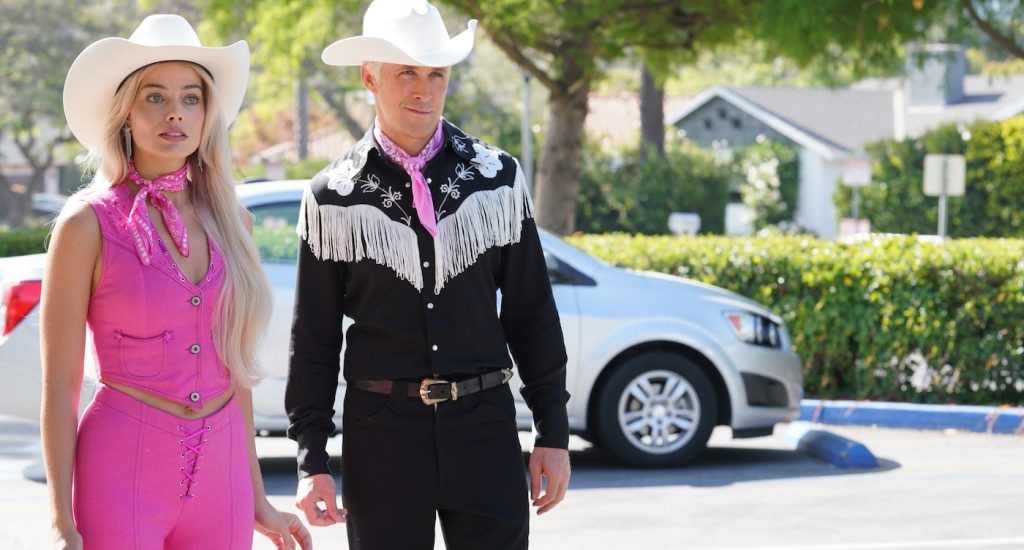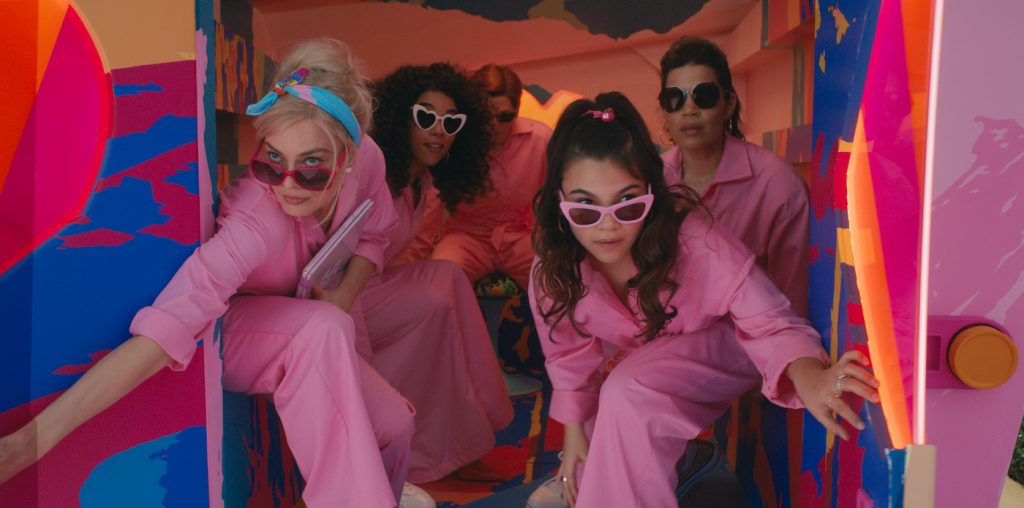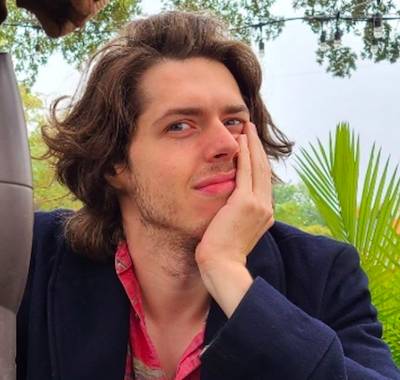“Barbie” Editor Nick Houy on Leaving Only the A-Plus Jokes
Barbie is currently dominating the cineplex. Co-writer/director Greta Gerwig‘s film, based on the iconic Mattel doll, has become a runaway success, earning over a billion dollars at the box office and garnering an outpouring of love and passion from audiences across the globe. It’s a story of self-discovery that strikes some serious chords with viewers, and it’s also often very funny, relentlessly inventive, and so clearly a work of passion from the folks on the screen and behind the camera that you leave the theater a little lighter than you went in. It’s a special movie.
In this fairy tale of sorts, one of the film’s many Barbies (Margot Robbie) starts to question her mortality and the meaning of life itself. What is her place in the world? What does she signify for women in 2023? Robbie’s “Stereotypical Barbie” discovers the answers the hard way when she and one of the many insecure Kens (Ryan Gosling) leave their dream homes to experience the real world. Along the journey, there are musical numbers, foot chases, car chases, and even an encounter with a deity.
It’s a lot of movie—in a great way—but it meant a lot of hard work for editor Nick Houy to craft a singular film that marshals significant swings in tone, from goofy to heartbreaking. Recently, Houy took The Credits behind the scenes of Barbie, delving into the process of editing some of the film’s most memorable moments.
These are the first musical numbers you’ve edited in your career, right? How was your experience?
It was great. The Dua Lipa song at the beginning with the Barbies, we shot it with a backing track, and then Dua Lipa came in later while we were cutting and added all the lyrics, so that was unique. We had to recut it a few times with different versions of the song, so to speak. Then, the other ones were pretty much fully written when we started recording. Obviously, Matchbox Twenty was all done and recorded with Ryan’s voice, as was the “I’m Just Ken” song. That sequence was Saving Private Ryan but on Malibu Beach. So, it was pretty straightforward. I don’t know why it didn’t seem strange to do music numbers. It felt natural to me.
Did you and Greta Gerwig talk a lot about the pace of filmmaker Jacques Demy’s musical numbers?
Of course. When I first saw the dream ballet set, I was immediately like, “Oh, it’s exactly like in Singin’ in the Rain when they have that dream ballet with a long dress and everything.” On one side, it’s blue, and on the other side, it’s pink. Then, when it cuts to the beach when they’re all done dancing, and then suddenly, they’re back in reality when they’re on the beach, it’s the same color palette, like the blue of the ocean and the pink of the beach. It was just beautifully designed. People that hadn’t picked up that it was Singin’ in the Rain, it made me wonder how they were watching it. It must’ve been a strange watch for them because, to me, it was such a direct reference. Then, of course, “Greased Lightnin'” as well. It’s just got it all going on.
It’s a lot of movie in the best sense possible, but was it a case of too much of a good thing for you?
Totally. I would say just the musical number itself, “I’m Just a Ken,” was just finding the best moments of choreography and visible performance because we knew that we had the track, so you’re not finding the vocal performance. They only shot it in a day, so there wasn’t a ton to choose from. Within the context of the story, we did get some people who thought it was too long, and we agree with that, but that’s the point of it, is that the Kens take it all over, and they’re way over the top with it all. So, is it worth some people feeling that it’s too long for the ultimate payoff of what it is to ring true? I think you should always go with what feels the most emotionally true for your story. In this case, it happened to be a long version of the scene.
There are many scenes in this movie, especially when Barbie talks to her creator in the end, that really take their time. Most movies would’ve cut or fast-forwarded through those scenes, right?
I would say it was more what felt emotionally correct in just a cinematic way and not thinking about it as a modern movie or a summer movie, or like when we watch a movie, where would we want to feel the slowdown? We got a fair amount of notes saying that those were the two places that were a bit slow. As long as you know that you’re making that conscious decision, then you’ll be okay. Even if not everyone agrees with you, at least you go with the knowledge.

The race at Mattel is like a Marx Brothers movie. How was it nailing the pacing in that chase sequence?
That was all Will Ferrell, really, and Margot was amazing as well. She suddenly clicked into this, as you said, like it was a Marx Brothers-type chase. We always talk about it like it was a [director] Jacques Tati set, which it very much was, and I always think of it as a Mel Brooks thing, too. Again, it was more like, “Which pieces do we use?” because they’re all funny, and there was a lot of funny stuff in that chase that didn’t make it in.
Only go with the best?
You just had to say, “What are the A-plus jokes?” and you weren’t allowed to do the A or A-minus jokes. At a certain point, you have to be hard on it because that was another area. Then, it’s followed by a car chase. We had versions of that [foot and car chase] where everyone was tired at a certain point, so we had to trim them way down, even though they were great. The whole thing, if you watch them on their own, was fantastic. In the context of the movie, they were too long.
Ten minutes later, you can really feel something shift after all that wonderful silliness. How delicate was editing the tone of Barbie?
You have to create those without too much whiplash, hopefully. You’ve got the whole chase through the cubicles in the office and everything, and then it slows down. She basically meets God, her mother, Ruth Handler, in the office out of nowhere. Suddenly, it’s from a thousand miles an hour to zero, and then you suddenly have to kick it up again when she runs down the stairs, out the door, and gets into the car chase. So, another tricky thing that makes it feel longer is that it’s broken up by a long dialogue scene in the middle. We spent a lot of time massaging that. As long as you’re creating it in a way that the audience can follow the emotion and is invested in that emotion, then you don’t feel the length as much.

Audiences definitely invest in the emotion behind the speech America Ferrera’s character gives. How’d you want to preserve or enhance what Greta shot there?
That one was to find the best performances, and it’s amazing because I have a general rule I learned from a great editor mentor of mine that generally, you should not cut from one person to the same person in a cut, which is a cool rule for any editors out there who are reading this. It seems obvious, I guess, but you’d be surprised how often you are tempted to do it if you don’t have a good cutaway shot. America just performed that scene beautifully. It was finding your favorite pieces and then finding the right cutaways at the right moments.

Did you have much coverage there or reaction shots to cut to?
We had a lot of great cutaways to Margot and Sasha (Ariana Greenblatt) and a lot of the other characters, including Weird Barbie (Kate McKinnon), who has a great moment there where she realizes how serious it is. It was a cool moment, letting the audience also realize how serious it is. It helps you change the tone. Having weird Barbie being like, “Oh shit, she’s right,” that’s very helpful for the audience also to change gears and listen to what she’s saying. It was finding those moments and utilizing them properly so that you are let into them in a comfortable, interesting way. Hopefully, it hits you hard, and then you can get back to the fun.
Barbie is in theaters now.
For more on Barbie, check out these stories:
“Barbie” and Greta Gerwig Make History Again
“Barbie” Hair & Makeup Artist Ivana Primorac Conjures Personality From Plastic
Pretty in Pink With “Barbie” Production Designer Sarah Greenwood & Set Decorator Katie Spencer
Featured image: (L-r) Director/Writer GRETA GERWIG, MARGOT ROBBIE and RYAN GOSLING on the set of Warner Bros. Pictures’ “BARBIE,” a Warner Bros. Pictures release. Photo Credit: Dale Robinette



